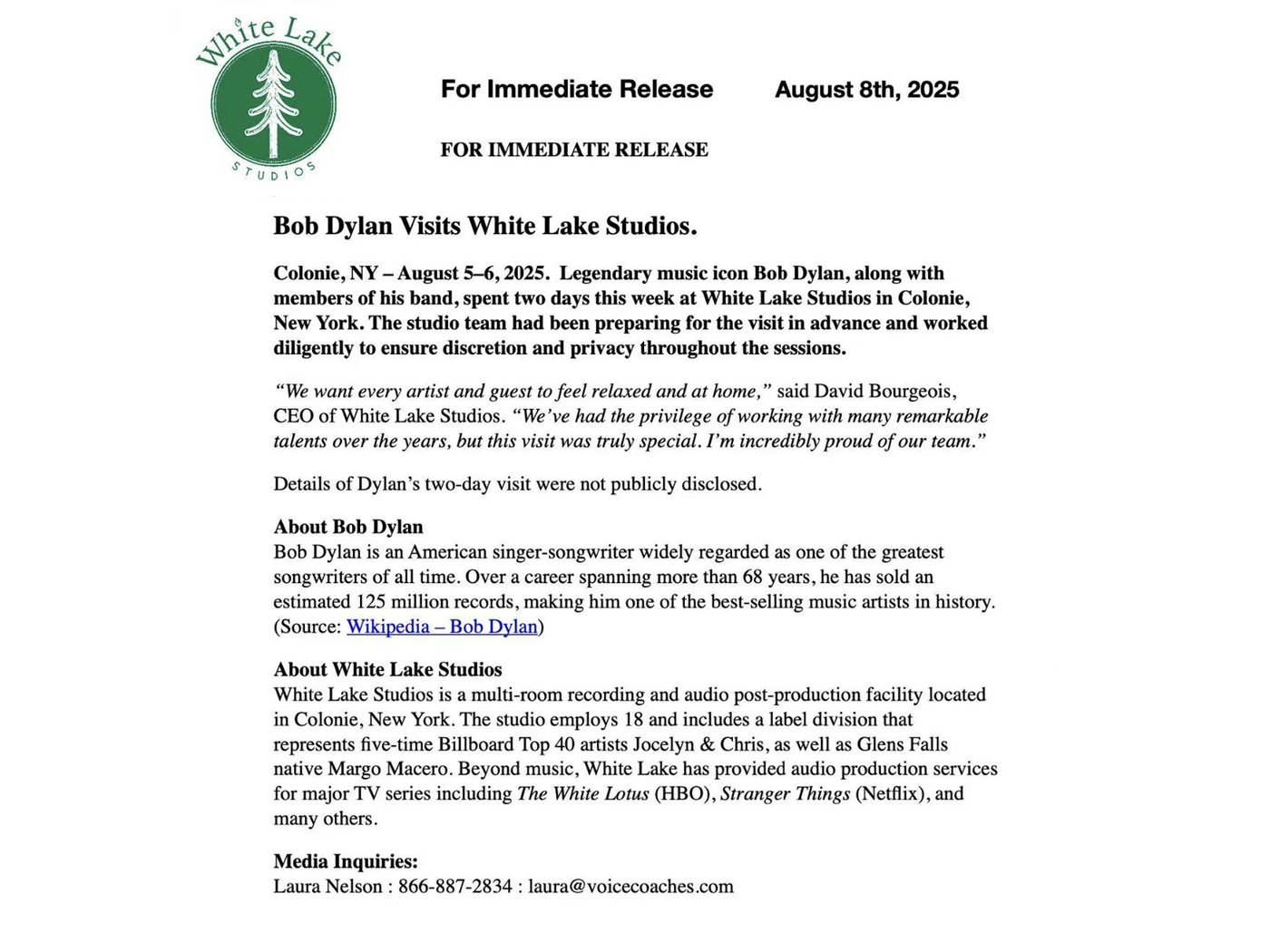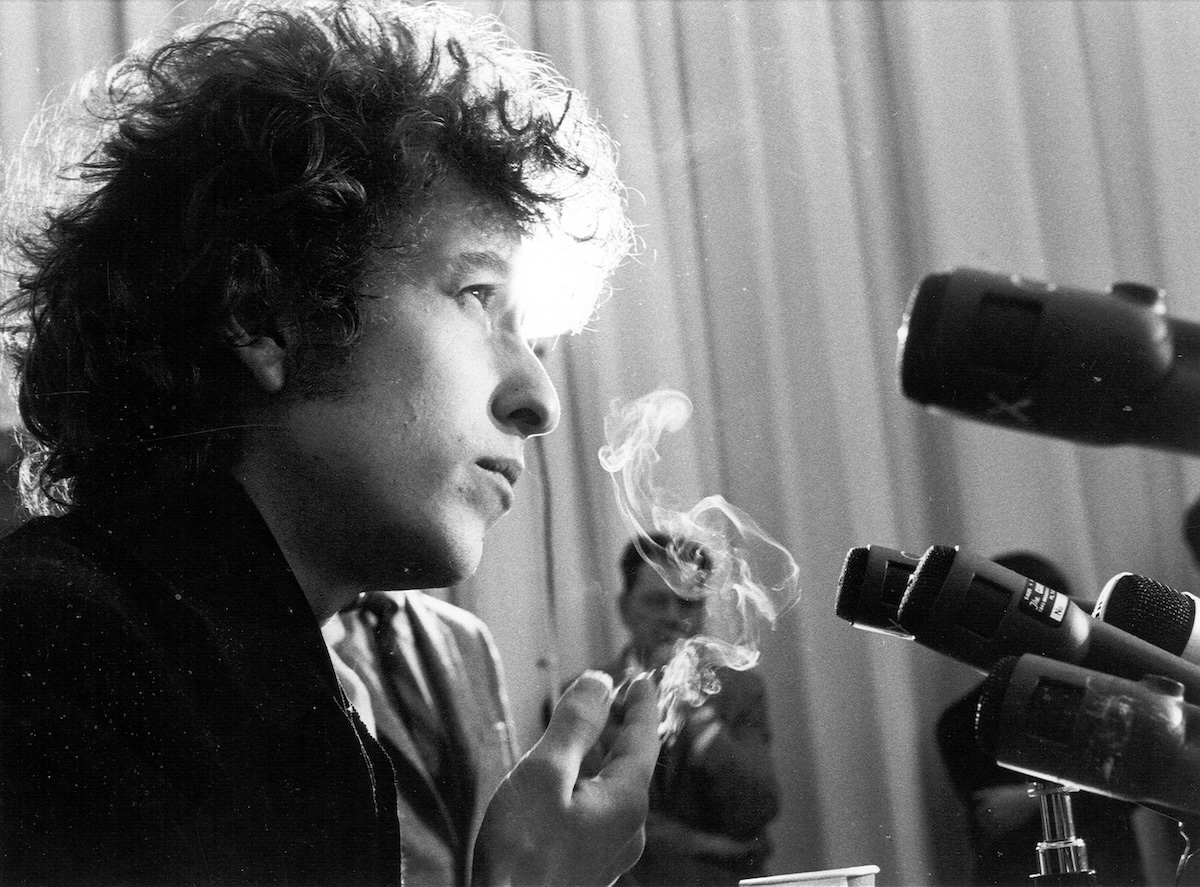The first time we hear Bob Dylan on this fabulous 8CD, 168-track boxset, it’s Christmas Eve 1956. Dylan’s high school trio, The Jokers – Bob Zimmerman (vocals and piano), Larry Keegan and Howard Rutman (vocals) – are whomping through Shirley And Lee’s “Let The Good Times Roll” in a version recorded on a 78rpm acetate at the Terlinde Music Store in St Paul, a bus ride from the 15-year-old Dylan’s home in Hibbing, Minnesota.

The young Dylan, hollering his head off
The first time we hear Bob Dylan on this fabulous 8CD, 168-track boxset, it’s Christmas Eve 1956. Dylan’s high school trio, The Jokers – Bob Zimmerman (vocals and piano), Larry Keegan and Howard Rutman (vocals) – are whomping through Shirley And Lee’s “Let The Good Times Roll” in a version recorded on a 78rpm acetate at the Terlinde Music Store in St Paul, a bus ride from the 15-year-old Dylan’s home in Hibbing, Minnesota.
It’s barely a minute long, not much more than a gloriously raucous din, but there distinctly is the young Bob, hollering his head off. The last time we hear him, it’s October 1963, at the end of his first headlining show at a sold-out Carnegie Hall, Dylan in full command of 3,000 hip New Yorkers who’ve just been profoundly wowed by a set full of era-defining songs, all of them written in the two and a bit years since Dylan blew into Greenwich Village from Minneapolis in January 1961.
Dylan’s remarkable transformation is the stuff of legend
Dylan’s remarkable transformation from cocky young Woody Guthrie disciple into a seemingly unstoppable songwriting force, moving at speed without caution or brakes, is the stuff of legend. Through An Open Window, as historian and Dylan fan Sean Wilentz writes in his illuminating sleevenotes, is basically an audio documentary of that legend taking shape, the content across these eight CDs drawn from a vast trove of studio outtakes, alternative versions, concerts, club gigs, privately recorded performances at the apartments of friends, stage banter and radio broadcasts, the bulk of it previously unreleased. There are highlights galore.
After the staticky blast of “Let The Good Times Roll”, CD1 continues with the teenage Dylan in May 1959, singing one of his own early songs, “I Got A New Girl”, more doo-wop than Woody Guthrie, recorded at the home of a Hibbing folk fan friend, Rick Kanga, amazingly preserved. The versions that follow of Jesse Fuller’s “San Francisco Bay Blues” and Guthrie’s “Jesus Christ” were recorded at his own Hibbing home in September 1960. Dylan attacks both with more determination than finesse, but no noticeable lack of confidence, assuming even then an exaggerated dustbowl twang whenever he gets near anything written by Guthrie.
A lament for something already lost
Elsewhere on the disc, there’s a breathtakingly intimate “Song To Woody” from an early show at The Gaslight in Greenwich Village, an affecting version of Woody’s “Pastures Of Plenty”, recorded at the New Jersey home of Guthrie fans Bob and Sid Gleason, who also taped his version of “Remember Me”, a song full of hobo twilight originally recorded by Lula Belle And Scotty, The Sweethearts Of Country. The disc ends with an alternative take of “I’ll Fly Away” from the Carolyn Hester album Dylan played harmonica on at sessions in September 1961 produced by John Hammond, who would soon sign him to Columbia.
CD2 opens with six tracks recorded in November 1961 at Carnegie Town Hall, including an electrifying version of the traditional “Gospel Plow”, a tender cover of Liam Clancy’s “Young But Daily Growing”, a frantic take on the traditional “Pretty Polly”, so urgent it sounds like it might spin off into “It’s Alright Ma (I’m Only Bleeding)”. The highlight here is the version of Guthrie’s “This Land Is Your Land” that previously appeared on No Direction Home: The Soundtrack, The Bootleg Series Vol 7. Versions of the song are usually celebratory, anthemic, stirring. Dylan slows it down, turns it into something melancholic and plaintive, a lament for something already lost or at least quickly vanishing.
A Monday night hootenanny at Gerdes Folk City
The stand-out of four outtakes from the sessions at Columbia’s Studio A that produced Dylan’s debut album is the version of “House Carpenter”, left off the album, the song later revisited on the sessions for Self-Portrait released on Another Self-Portrait: The Bootleg Series Vol 10. The six tracks recorded at her Minneapolis digs by Dylan’s friend Bonnie Beecher are introduced by some hilariously smart patter about being paid in chess pieces after a gig at a New Jersey coffee house and features the recently written “I Was Young When I Left Home”, complete with glittering guitar.
On April 16, 1962, a month after his first album came out, Dylan played a 20-minute set at Gerdes Folk City, a Monday night hootenanny, anonymously taped. There are six tracks from the set on CD3. He opened with a raucous new song, “Honey, Won’t You Allow Me One More Chance”, featured a lovely “Corrina, Corrina”, and most spectacularly debuted a song he’d just started writing at a nearby Village songwriters’ hangout.
It was dropped from the final tracklisting
“Blowin’ In The Wind” was only two verses long at this point but folk revival superstars Peter, Paul And Mary would soon take their version to number two on the Billboard chart, turning it into a Civil Rights anthem, a song sung all over America. Otherwise on CD3, there’s an early radio broadcast of “The Death Of Emmett Till”, outtakes from the first Freewheelin’ sessions, tracks from sessions with Harry Belafonte, Victoria Spivey and Big Joe Williams and five spinetingling tracks from a club date in Montreal, including a stunning “Let Me Die In My Footsteps”, recorded for Freewheelin’ but dropped from the final tracklisting.
There are 10 more Freewheelin’ outtakes on CD4, plus an alternative take of “Mixed-Up Confusion”, recorded at John Hammond’s suggestion with a band, an idea that so incensed Albert Grossman he sacked Hammond and replaced him with Tom Wilson. Additionally, on CD4 there are four tracks from an invitation-only Gaslight show, including a mesmerising eight-minute “Barbara Allen”, a still-evolving “Don’t Think Twice” and a second public performance of “A Hard Rain’s A-Gonna Fall” whose pile-up of apocalyptic imagery left Dave Van Ronk speechless. You imagine he was not alone.
A shiver goes through you
The bounty of Freewheelin’ outtakes continues on CD5, including unreleased versions of “Masters Of War” and “Girl From The North Country”, Dylan respectively at his most vengeful and most tender. The disc also contains seven tracks from his April 1962 show at New York’s Town Hall and the only known performance of another recently written song, “I Rode Out One Morning”. Dylan made his first appearance at the Newport Folk Festival in July, with four tracks from that weekend on CD6, Joan Baez sounding like a voice looking for a pulpit on “With God On Our Side”. By August, he was back in Studio A recording The Times They Are A-Changing. There are seven outtakes here from early sessions, alongside a fascinating home taping of the title track.
A shiver goes through you when Dylan opens his November 1963 Carnegie Hall concert with the public debut of “The Times They Are A-Changin’”. Imagine hearing that for the first time. The entire show plays out over Discs 7 and 8. The setlist is incredible, his performance impeccable. “Masters Of War” and “The Lonesome Death Of Hattie Carroll” are devastating and there’s a luminous version of “Lay Down Your Weary Tune” and a hypnotic nine-minute “Percy’s Song”. This is the sound of Dylan not so much capturing or seizing the moment as Dylan becoming the moment itself. Almost unbelievably, he was still only 22 years old.
When you purchase through links on our site, we may earn an affiliate commission. Here’s how it works.

The post Bob Dylan’s Bootleg Series Volume 18: Through The Open Window, 1956-1963 reviewed: documenting the dawn of a legend appeared first on UNCUT.



